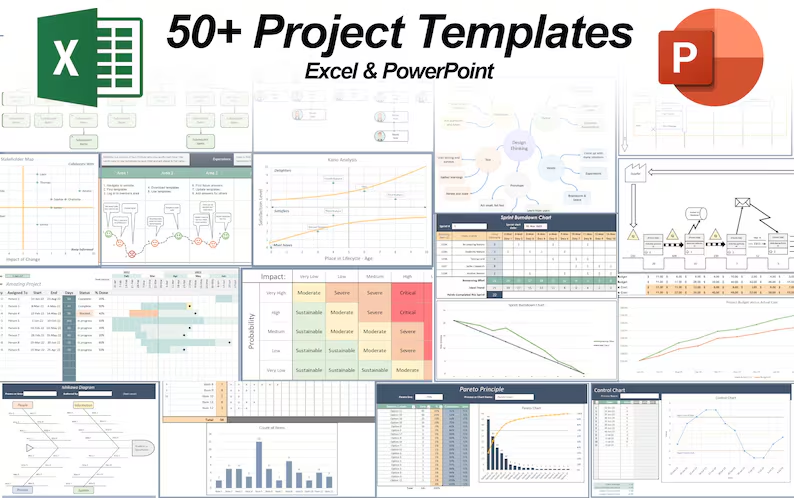Note: Click on the video above to watch.
Show Off In Meetings with these Excel Tips!
Navigating and showcasing data in Excel can be a breeze with the right shortcuts. Whether you’re presenting data to your boss or analyzing large datasets, these handy tips will streamline your workflow and make your reports stand out. Let’s dive into some essential Excel shortcuts to enhance your data management skills.
1. Select Entire Table
To quickly select all your data in a table, use:
- Ctrl + A, or
- Ctrl + Shift + Spacebar
These shortcuts highlight your entire table, making it easy to apply formatting or make bulk changes.
2. Convert Data to Table
Turning your data into a formal table can help with organization and filtering. Simply press:
- Ctrl + T
This converts your selected range into a table, allowing for easier manipulation and formatting.
3. Add Filters
To add filters to your data, which is crucial for sorting and analyzing information, use:
- Ctrl + Shift + L
This will add filter dropdowns to your table headers, making it simple to filter and view specific data subsets.
4. Insert a Slicer
For a more visual way to filter data, especially useful in presentations, you can add a slicer:
- Select a cell in your table.
- Go to the Table Design tab and click Insert Slicer.
- Choose the fields you want to filter by, such as “Job Title”.
Slicers make it easy to filter and display data in a way that’s clear and interactive.
5. AutoSum
To quickly calculate the sum of a column or row, select the empty cell where you want the total to appear and press:
- Alt + =
Excel will automatically sum up the numbers above or to the left of the selected cell.
6. Find Top and Bottom Values
To find the top or bottom values in a dataset:
- Use =LARGE(range, n) to find the nth largest value.
- Use =SMALL(range, n) to find the nth smallest value.
For example, to find the top 3 salaries, use =LARGE(range, 1), =LARGE(range, 2), and =LARGE(range, 3).
7. Trace Formulas
To troubleshoot or verify formulas while you’re in a meeting, you can instantly go to where the formula gets its data from:
- Press Ctrl + [ to jump to the cells referenced by a formula.
- Press Ctrl + ] to see which cells are dependent on the selected formula.
You can also view all formulas in your worksheet by pressing:
- Ctrl + `
This shows all formulas in your spreadsheet, helping you audit your data.
8. Trace Formulas with Arrows
To visually trace the relationships between formulas:
- Go to Formulas > Trace Precedents or use the shortcut Alt, T, U, T to add arrows showing which cells affect the formula.
This is a great way to identify and correct any errors in your formulas.
9. Create a Pivot Table
For advanced data analysis, create a pivot table by pressing: Alt, N, V, T
This opens the PivotTable creation dialog, letting you summarize and analyze your data efficiently.
Conclusion
Mastering these Excel shortcuts will not only save you time but also help you present your data in a professional and effective manner. Whether you’re preparing for a meeting or just organizing your data, these tips will ensure you navigate and showcase your tables with ease. Happy Excel-ing!
See more Excel Tips and Tricks articles:
- Essential Excel Shortcuts to Master Your Table Data
- 20 Excel Shortcuts to Clean Up Your Spreadsheet Like a Pro
- 9 Excel Features you MUST know – 15 Minute Zero to Hero
- How to Count Colored Cells in Excel (3 Ways)
You can see what people are saying about David McLachlan here: REVIEWS
Navigate to Free Project Management and Leadership Articles through the links on the right (or at the bottom if on Mobile)




 20 Excel Formatting Shortcuts to Clean up Your Data
20 Excel Formatting Shortcuts to Clean up Your Data Excel is a powerful tool that can enhance your productivity in project management, data analysis, and many other fields.
Excel is a powerful tool that can enhance your productivity in project management, data analysis, and many other fields.
